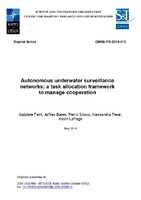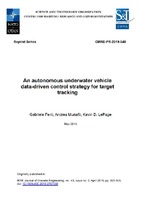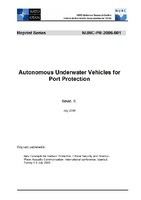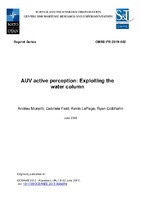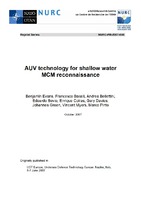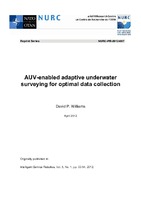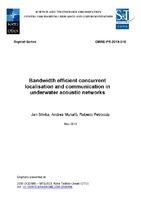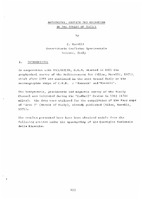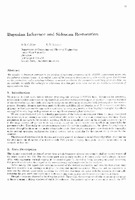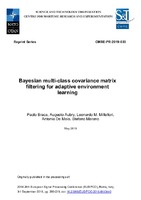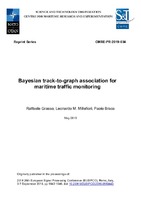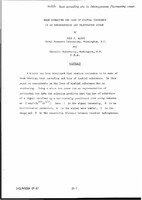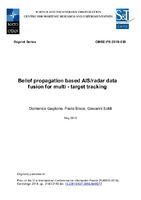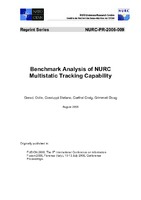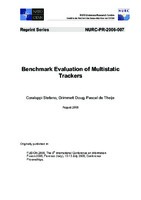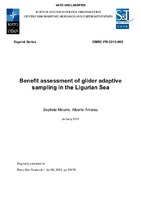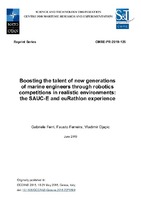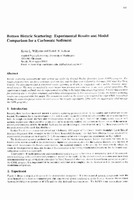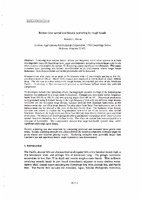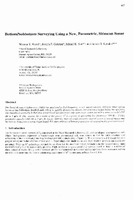Browsing Reprints by Title
Now showing items 102-121 of 548
-
Autonomous underwater surveillance networks: a task allocation framework to manage cooperation
(2019/05)The design of efficient task allocation schemes is essential to manage autonomous underwater robotic surveillance networks. The network has to assign the most suited robots to the tasks which compose the mission, in spite ... -
An autonomous underwater vehicle data-driven control strategy for target tracking
(CMRE, 2019/05)This paper presents a data-driven approach to control the movement of autonomous underwater vehicles (AUVs) operating as receivers of a multistatic sonar surveillance network. The algorithm adopts a nonmyopic receding ... -
Autonomous underwater vehicles for port protection
(NURC, 2006/07)NATO's present capability to deal with a terrorist threat to our ports is slow, dangerous, and inefficient. Ports are a challenging area within which to conduct MCM operations due to several factors: shipping movements, ... -
AUV active perception: exploiting the water column
(CMRE, 2019/06)Autonomous Underwater Vehicles (AUVs) present a low-cost alternative or supplement to existing underwater surveillance networks. The NATO STO Centre for Maritime Research and Experimentation is developing collaborative ... -
AUV technology for shallow water MCM reconnaissance
(NURC, 2007/10)The ability to perform MCM reconnaissance missions in shallow water is important in both expeditionary MCM and in the protection of ports against maritime improvised explosive devices (MIEDs). For many years AUV systems ... -
AUV-enabled adaptive underwater surveying for optimal data collection
(NURC, 2012/04)A new adaptive strategy for performing data collection with a sonar-equipped autonomous underwater vehicle (AUV) is proposed. The approach is general in the sense that it is applicable to a wide range of underwater tasks ... -
Bandwidth efficient concurrent localisation and communication in underwater acoustic networks
(CMRE, 2019/05)Localisation is essential for an Autonomous Underwater Vehicle (AUV) to perform its mission and to georeference any data acquired during the dive. When the AUV is part of a heterogeneous underwater acoustic network (UAN), ... -
Bathymetry, gravity and magnetism in the Strait of Sicily
(NATO. SACLANTCEN, 1972/09)In cooperation with SACLANTCEN, O.G.S. started in 1961 the geophysical survey of the Mediterranean Sea (Allan, Morelli, 1971 ), which after 1966 was continued in the seas around Italy on the oceanographic ships of C.N.R. ... -
Bayesian inference and sidescan restoration
(NATO. SACLANTCEN, 1997)We consider a Bayesian approach to the problem of inferring parameters of the SONAR environment given only the gathered sidescan image. A simplified model of the process is developed along with suitable distributions on ... -
Bayesian multi-class covariance matrix filtering for adaptive environment learning
(CMRE, 2019/05)Covariance matrix estimation is a crucial task in adaptive signal processing applied to several surveillance systems, including radar and sonar. In this paper we propose a dynamic environment learning strategy to track ... -
Bayesian track-to-graph association for maritime traffic monitoring
(CMRE, 2019/05)We present a hypothesis test to associate ship track measurements to an edge of a given graph that statistically models common traffic routes in a given area of interest. The association algorithm is based on the hypothesis ... -
Beam spreading and loss of spatial coherence in an inhomogeneous and fluctuating ocean
(NATO. SACLANTCEN, 1975/10)A theory has been developed that enables estimates to be made of beam bending, beam spreading and loss of spatial coherence. In this paper we concentrate on the loss of spatial coherence due to scattering. Using a minus ... -
Belief propagation based AIS/radar data fusion for multi-target tracking
(CMRE, 2019/05)A data fusion technique aiming at combining observations from two classes of sensors is proposed. The first class consists of sensors that produce periodic noisy observations of the targets; moreover, they may also miss ... -
Benchmark analysis of NURC multistatic tracking capability
(NURC, 2006/08)This paper provides a brief description and performance results for the multistatic sonar trackers developed at NURC. Our analysis is based on common data distributed as part of the Multistatic Tracking Working Group ... -
Benchmark evaluation of multistatic trackers
(NURC, 2006/08)This paper provides an overview of the Special Session on Multistatic Sonar and Radar Tracking at FUSION 2006. This includes background on the Multistatic Tracking Working Group, a brief description of the datasets and ... -
Benefit assessment of glider adaptive sampling in the Ligurian Sea
(CMRE, 2014/01)The benefits of piloting a glider during a 6-day period via an adaptive sampling procedure in a 80 × 60 km2 marine area are assessed under a fully operational framework. The glider trajectory was adapted to reduce the ocean ... -
Boosting the talent of new generations of marine engineers through robotics competitions in realistic environments: the SAUC-E and euRathlon experience
(CMRE, 2019/06)This article summarizes the experience of the NATO Science and Technology Organization (STO) Centre for Maritime Research and Experimentation (CMRE) in the organization of the Student Autonomous Underwater Vehicle ... -
Bottom bistatic scattering: experimental results and model comparison for a carbonate sediment
(NATO. SACLANTCEN, 1997)Bistatic scattering measurements were carried out under the Coastal Benthic Boundary Layer (CBBL) program. The results presented here are for a carbonate sand-silt-clay, and the data were collected in Februar) 1995 near ... -
Bottom time spread and bistatic scattering by rough basalt
(NATO. SACLANTCEN, 1993/08)Scattering from oceanic basalt affects low-frequency active sonar systems in at least two important ways: (1) Significant time, angle and frequency spreading reduces target echo levels when systems over-resolve the spread; ... -
Bottom/subbottom surveying using a new, parametric, sidescan sonar
(NATO. SACLANTCEN, 1997)The Naval Research Laboratory (NRL) has developed a dual-frequency, towed, interferometric, sidescan sonar system known as the Subbottom Swath System, which is capable of detecting objects and structures buried below the ...
